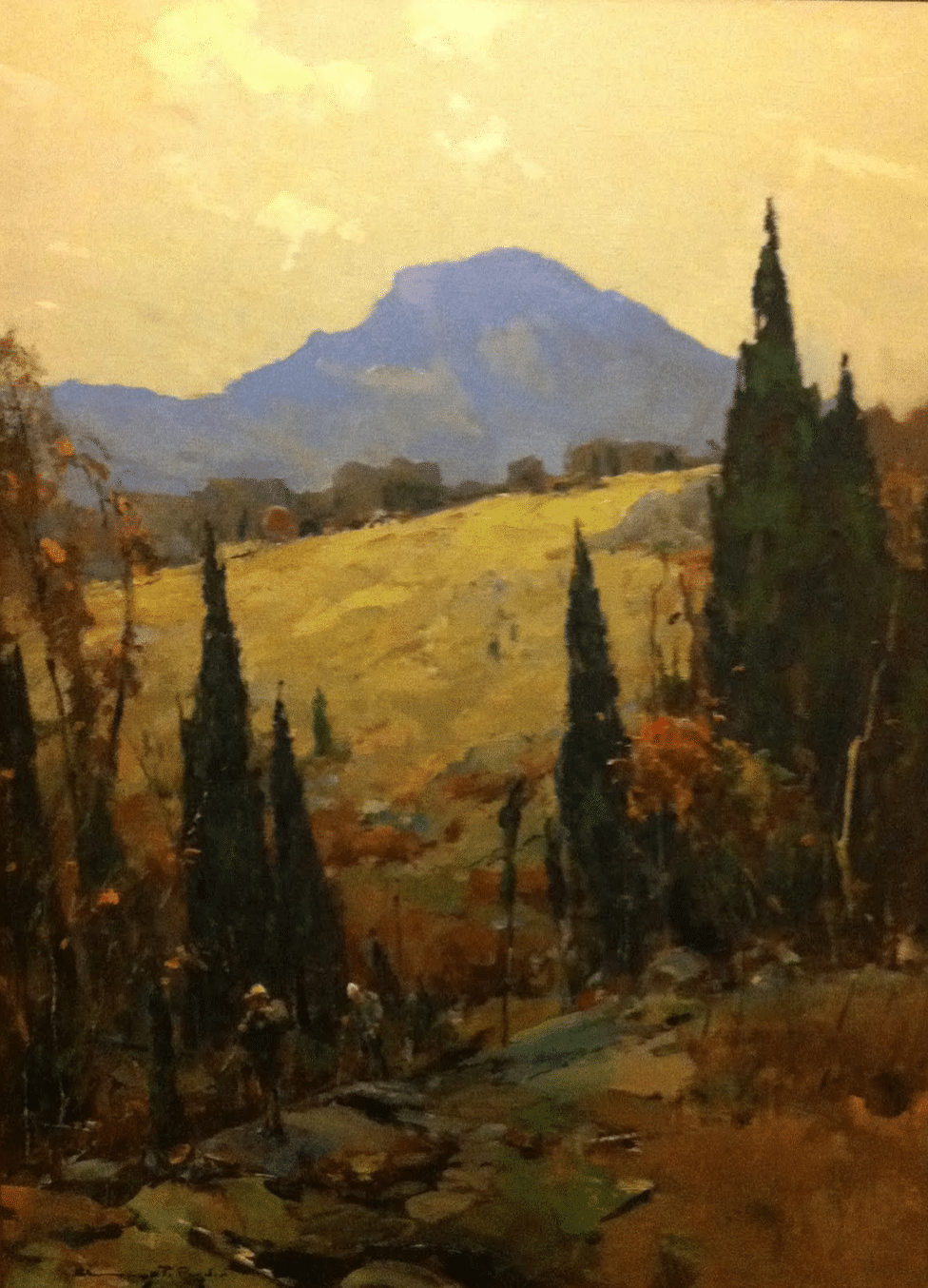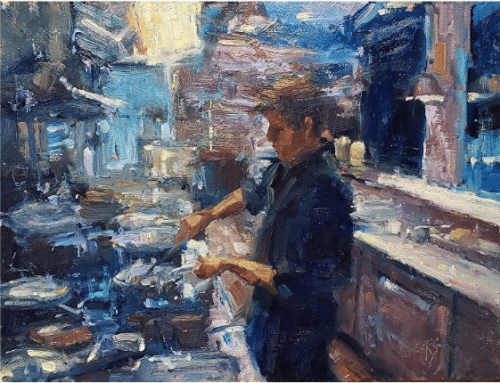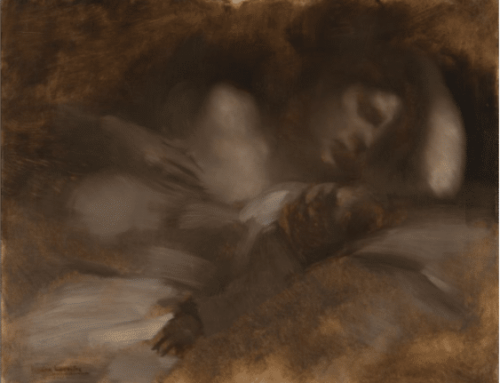A largely forgotten master landscape painter created this oil painting on display at the Currier Museum in Manchester, NH in 1934.
You won’t find Chauncey Foster Ryder in many of the standard art history books. You can acquaint yourself with his bio here.
For the most part, Chauncey Ryder’s style corresponds to that of other pre-WW II, post-Impressionist landscape painters of New England who are better known, but still relatively obscure outside the world of representational landscape painting, such as John Enneking, Willard Metcalf, and John F. Carlson.
As one writer saw it in 1978, Ryder set himself apart by painting with intuitive feeling in pursuit of “the poetic aspect of nature.” This he did in at least three ways:
- design (broad horizontal shapes often punctuated by spindly verticals;
- color choice (expressive rather than purely descriptive); and
- paint handling: a gestural seemingly offhand way of applying pigment that very much left evidence of the “artist’s hand.”
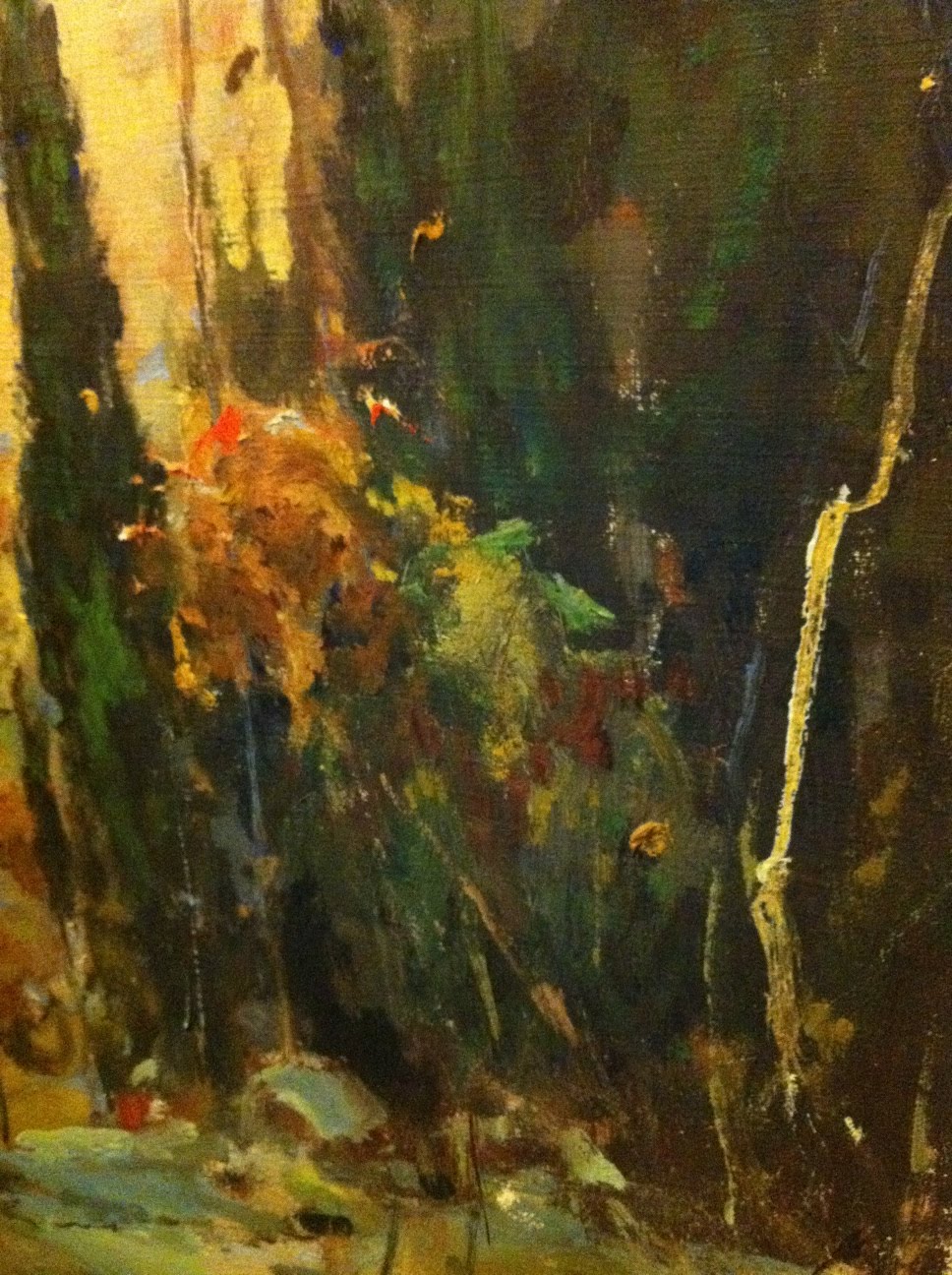
Detail: Ryder’s painterly color choices and brushwork.
A close look at the color and brushwork on The Long Trail reveals the semi-abstract, exaggerated impressionism of Ryder’s style. This kind of paint handling brought a renewing approach to the landscape tradition at a time when modernist abstraction dominated painting and straight-up representations of nature seemed passé.

Ryder also designed The Long Trail rather like an abstract painter would. He rejected traditional formulas in favor of boldly centering his central (mountain) shape, unleashing bright pigment, and engineering a vigorous rhythm of sharp, criss-crossing vertical and horizontal lines (via the slanted hill and the pines) across the painting’s center. The work fairly pulsates in person by virtue of its large alternating bands of warm and cool colors.
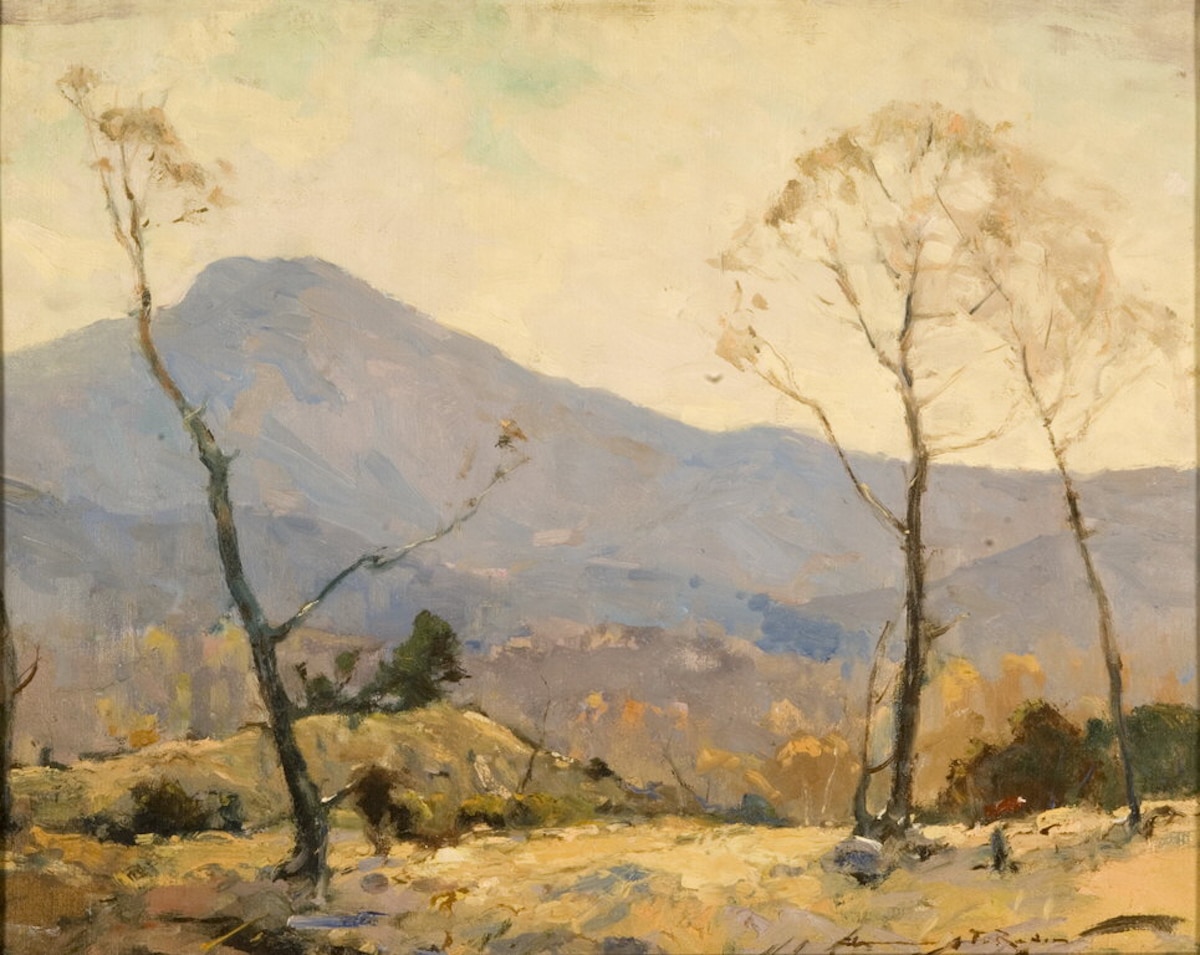
Chauncey Foster Ryder New England Moujntain scene, c. 1920s Collection of the North Carolina Museum of Art
I’ve always been fond of Ryder’s trees for what seems to me their peculiar mix of elegant and awkward.
If your trees could use sprucing up, John MacDonald, a contemporary painter also working in the poetic vein, gives a fairly comprehensive how-to guide in this article. You can also follow along with him in his videos.
———————————
Works by Keith Haring Given New Context in Florida Show
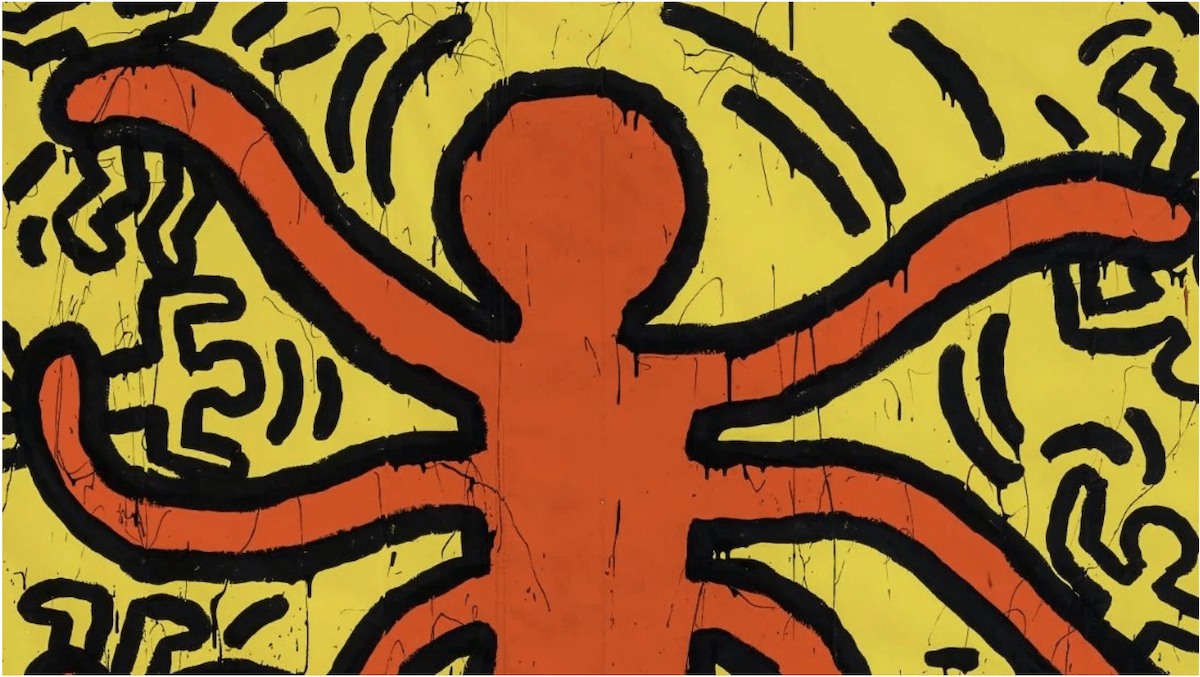
Keith Haring, Untitled, April 1982, Acrylic on tarp. Courtesy of Rita Krauss and Phyllis Mack. © Keith Haring Foundation. Detail.
Confrontation: Keith Haring and Pierre Alechinsky, on view at NSU Art Museum, Miami, pairs one of the most beloved figures of 20th-century American art with a legend of the European avant-garde.
In connecting Haring to Alechinsky, this presentation emphasizes the under-recognized legacy of CoBrA, a key experimental movement, that eroded artistic and social barriers by bringing work into the streets and adapting non-traditional creative sources including children’s art and pre-historic visual culture in the effort to instigate positive social change.

